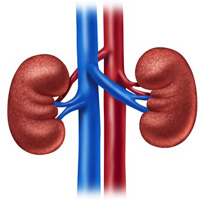The Matryoshka technique in percutaneous nephrolithotomy

Accepted: January 16, 2021
All claims expressed in this article are solely those of the authors and do not necessarily represent those of their affiliated organizations, or those of the publisher, the editors and the reviewers. Any product that may be evaluated in this article or claim that may be made by its manufacturer is not guaranteed or endorsed by the publisher.
Objective: Miniaturized percutaneous nephrolithotomy (PCNL) reduces the risk of haemorrhagic complications, but the limited field of work represents a drawback. To obtain the best outcomes, the percutaneous access size should be intraoperatively tailored. Our purpose is to describe the indications and the procedural steps of the Matryoshka technique and to report its clinical outcomes.
Materials and methods: We performed a retrospective analysis of the data from consecutive Matryoshka PCNL procedures from October 2016 to January 2018. Collected data included patients’ history, stone characteristics, intra- and post-operative items, stone clearance and need for retreatment. The main indication to the Matryoshka technique is the inability to securely position a guidewire due to an obstruction or narrowness in the pyelocalyceal system. This technique begins by puncturing the calyx hosting the stone and advancing a hydrophilic guidewire through the needle. If the guidewire cannot proceed beyond the stone, the Matryoshka technique is employed for tract stabilization. The tract is carefully dilated with small-bore instruments and a cautious lithotripsy is performed to create enough space to introduce the guidewire beyond the stone under visual control. Once the access has been stabilized the surgeon can upsize the tract to the optimum to complete the procedure. Additionally, the technique can be employed when an intraoperative reassessment induces the surgeon to further dilate the tract to quicken the procedure.
Results: Sixteen patients were included, with a median stone volume of 3.49 cm3. Median operative time was 112 minutes. Three Clavien I-II (postoperative fever) and one Clavien IIIB (colon perforation) complications were reported. No blood transfusions were recorded. Three patients underwent scheduled retreatment as part of a multistep procedure. Out of the remaining 13 patients, 10 (76.9%) obtained a complete stone clearance.
Conclusions: The Matryoshka technique helps the urologist to obtain a secure percutaneous access and makes PCNL flexible and progressive, potentially minimizing the risk of access-related complications.
Türk C, Skolarikos A, Neisius A, et al. EAU Guidelines on Urolithiasis. 2019.
Seitz C, Desai M, Häcker A, et al. Incidence, Prevention, and Management of Complications Following Percutaneous Nephrolitholapaxy. Eur Urol. 2012; 61:146-158. DOI: https://doi.org/10.1016/j.eururo.2011.09.016
Tahra A, Sobay R, Bindayi A, et al. Papillary vs non-papillary access during percutaneous nephrolithotomy: Retrospective, matchpaired case-control study. Arch Ital Urol Androl. 2020; 92:50-52. DOI: https://doi.org/10.4081/aiua.2020.1.50
Sahin A, Uruc F. The comparative analysis of the three dilatation techniques in percutaneous nephrolithotomy: Which one is safer? Arch Ital Urol Androl. 2019; 91:171-173. DOI: https://doi.org/10.4081/aiua.2019.3.171
Ruhayel Y, Tepeler A, Dabestani S, et al. Tract sizes in miniaturized percutaneous nephrolithotomy: a systematic review from the European Association of Urology Urolithiasis Guidelines Panel. Eur Urol. 2017; 72:220-235. DOI: https://doi.org/10.1016/j.eururo.2017.01.046
Heinze A, Gozen AS, Rassweiler J. Tract sizes in percutaneous nephrolithotomy: does miniaturization improve outcome? Curr Opin Urol. 2019; 29:118-123. DOI: https://doi.org/10.1097/MOU.0000000000000574
Nagele U, Schilling D, Anastasiadis AG, et al. Minimally invasive percutaneous nephrolitholapaxy (MIP). Urol - Ausgabe A. 2008; 47:1066-1073. DOI: https://doi.org/10.1007/s00120-008-1814-2
Zanetti SP, Boeri L, Gallioli A, et al. Minimally invasive PCNL - MIP. Arch Esp Urol. 2017; 70:226-234.
De La Rosette JJMCH, Opondo D, Daels FPJ, et al. Categorisation of complications and validation of the Clavien score for percutaneous nephrolithotomy. Eur Urol. 2012; 62:246-255. DOI: https://doi.org/10.1016/j.eururo.2012.03.055
Proietti S, Giusti G, Desai M, Ganpule AP. A Critical Review of Miniaturised Percutaneous Nephrolithotomy: Is Smaller Better? Eur Urol Focus. 2017; 3:56-61. DOI: https://doi.org/10.1016/j.euf.2017.05.001
PAGEPress has chosen to apply the Creative Commons Attribution NonCommercial 4.0 International License (CC BY-NC 4.0) to all manuscripts to be published.


 https://doi.org/10.4081/aiua.2021.2.162
https://doi.org/10.4081/aiua.2021.2.162



